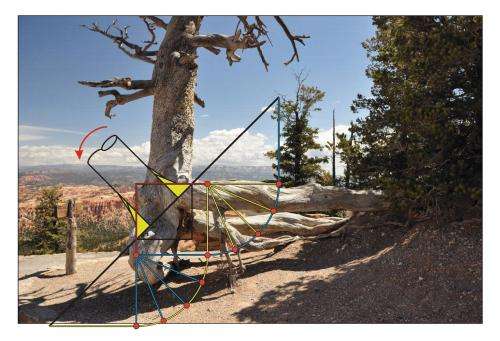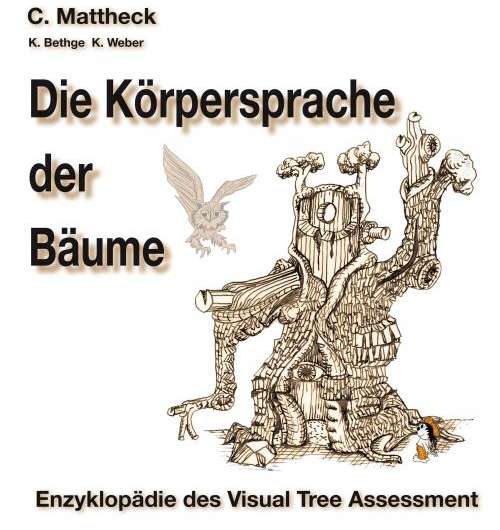The body language of trees

Trees do not lie: Their shape always is the response to external impacts or internal damage and may be tracked by exact observation. Professor Claus Mattheck and his team at the Karlsruhe Institute of Technology (KIT) identified the principles of how trees develop and repair themselves in an early stage. Gradually, they transferred these principles to the optimization of components in terms of lightweight construction and stability. Initially complicated computer programs developed to simple thinking tools that allow for a new understanding of trees without any mathematical formulas. Claus Mattheck, Klaus Bethge, and Karlheinz Weber have summarized their findings in the book "Die Körpersprache der Bäume" (The Body Language of Trees).
The shape of a tree documents strokes of fate and their overcoming by self-repair. Trees react to external impacts and internal damage, to wind, cracks, external injuries or fungal attacks. They repair themselves by adding wood at mechanically weak points in a load-controlled manner. These fundamental mechanisms of development and repair of trees in nature were identified by Mattheck and his team in an early stage. All these mechanisms are based on the axiom of constant stress, the rule of equal load distribution on the tree surface. The tree grows more wood until the defect-caused locally high stress is balanced. The resulting warning signals can be identified using the method of VISUAL TREE ASSESSMENT (VTA). "Meanwhile, the VTA method has spread all over the world and it is the basis of many court decisions," says Professor Dr. Claus Mattheck of the Biomechanics Division of the KIT Institute for Applied Materials. "By an external assessment of the tree, we can detect warning signals that have to be analyzed in more detail. Based on comprehensive field studies, we can determine failure criteria for the trees. This helps us assess whether trees represent a hazard for the environment or not." In cooperation with the Singapore National Parks Board, extensive experience has been gained for more exotic types of trees, such as umbrella trees, trees with buttress roots or stilt roots. Here, the VTA method has been used for nearly 20 years now.

Claus Mattheck and his team transferred the principles observed in nature to mechanical components and made them "grow" accordingly. The programs developed found their way into the development departments of industry, e.g. of automotive manufacturers. Shape optimization produced lighter and, at the same time, more stable components. Initially, complex programs and experienced programmers were required. "Based on the in-depth understanding of the mechanical relationships, we can now do without computer programs for simple applications at least and develop optimized shapes with the help of simple thinking tools." By means of the "method of tension triangles", a purely graphical method to reduce notch stresses, potential points of fracture can be eased. The result is a universal shape of nature that describes the creek pebble as well as the cliff line, the bone, and trees. It was found that this universal shape is also encountered in inanimate nature as a result of deformation or erosion.
Meanwhile, many industrial companies have started to optimize their components using Mattheck's thinking tools. A corresponding VDI Regulation 6224, Bionic Optimization, has been issued.
These thinking tools also allow for a new understanding of trees without having to use complicated formulas. "For the first time, we are now applying the new thinking tools to all parts of the tree and its environment," Professor Mattheck explains. "Finally, the developers of big mechanical engineering companies and arborists speak the same mechanical language: "People's mechanics."
More information: 25 years of tree research by the Biomechanics Division of KIT is summarized in the encyclopedia of Visual Tree Assessment "Die Körpersprache der Bäume" (The Body Language of Trees) by Claus Mattheck, Klaus Bethge, and Karlheinz Weber (548 pages, ISBN 978-3-923704-86-6).
Provided by Karlsruhe Institute of Technology





















